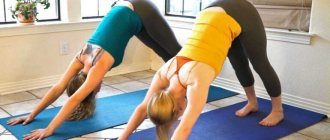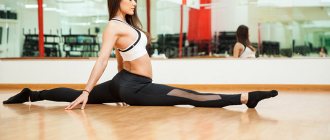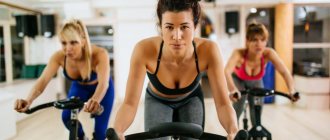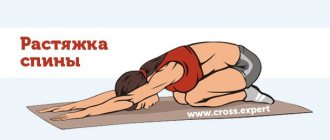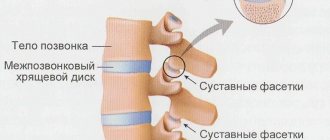When it comes to choosing safe and effective exercises as part of developing training and rehabilitation programs, the choice naturally falls on stretching. Some rehabilitation and fitness experts advocate stretching before exercise, while others argue that stretching may only be beneficial after exercise.
Some experts advocate only dynamic stretching, while others advocate the benefits of low-impact static stretching over long periods of time. However, the literature on how to do things is often overlooked. This article will review what the available evidence says about the actual mechanical changes associated with stretching, whether stretching prevents injury, whether stretching can affect posture and performance, different modes of stretching, and general guidelines on how best to apply stretching.
What types of stretch marks are there?
There are many different types of stretches that can be used to improve flexibility and mobility. However, for the purposes of this article, we will focus on the most common types of stretching that have been implemented and researched for effectiveness. Static, dynamic, ballistic, and proprioceptive neuromuscular stretching are the most commonly used and studied stretching methods.
Static stretching
Static stretching
This is the most common stretching option. Static stretching is performed by stretching the target muscle group to its maximum point and holding this position for 30 seconds or more. In most studies, this is completed by holding the stretch 4 times for 30 seconds each. There are two subtypes of static stretching which include active and passive static stretching. In active mode, a person independently applies additional force for greater intensity. In passive static stretching, additional force is applied by an external force (such as a partner or assistive device) to increase the intensity of the stretch.
Dynamic stretching
Dynamic stretching
Unlike static stretching, dynamic stretching requires the use of continuous movement patterns that mimic the exercise being performed or movement from a specific sport. Simply put, the goal of dynamic stretching is to improve flexibility for a given sport or activity by using your body through targeted movements to increase comfort and ability to perform movements with ease. An example of dynamic stretching would be a sprinter taking long, exaggerated steps or walking lunges to prepare for a race. Likewise, a basketball player can use lateral movements, vertical jumps, and T-bar exercises to dynamically warm up and stretch. Unlike static stretching, dynamic stretching increases whole-body circulation, heart rate, and breathing rate by using active muscle contraction and motor control as part of improving tissue extensibility. In addition, dynamic stretching and warm-up have been shown to be superior to static stretching and warm-up in improving pre-event performance. This may be due to various variables such as improved neural control, increased tissue compliance, increased blood flow, and increased tissue temperature.
Ballistic stretch
Ballistic stretch
This type of stretching is typically used as part of athletic activities and relies on performing repetitive springing movements to stretch the target muscle group. Ballistic stretches involve rapid, alternating movements at the end of the range, when the muscles are not relaxed enough to enter the range. Yes, ballistic stretching triggers the stretch reflex and has an increased risk of injury, but it can be used safely if performed in a gradual progression (low to high speed) and precedes static stretching.
Proprioceptive neuromuscular facilitation
This technique is based on the use of autogenic and reciprocal inhibition and includes three options:
- Hold-relax (isometric muscle contraction followed by relaxation and stretching): Perform a passive 10-second stretch.
- Resist the force (for 5-8 seconds) applied by the second person, which is accompanied by an isometric contraction in the target muscle group.
- Relax and allow yourself to be passively stretched; hold this position for 30 seconds to increase your range of motion.
- During this final phase, stretching must occur due to autogenic inhibition.
- Contraction-relaxation (isotonic muscle contraction followed by relaxation and stretching): Perform a passive 10-second stretch.
- The second person provides resistance, counteracting the concentric contraction force of the target muscle group without completely limiting the movement of the joint.
- Relax and allow yourself to be passively stretched; hold this position for 30 seconds to increase your range of motion.
- As in the previous version, stretching in the final phase is carried out due to autogenic inhibition.
Friends, Dmitry Gorkovsky’s seminar “Myofascial release (scientific approach to increasing joint mobility)” will take place very soon. Find out more...
- Hold-relax with antagonist contraction (isometric contraction of the agonist muscles, followed by contraction of the antagonist muscles to stretch the target muscles) In its first 2 stages, this technique is similar to the hold-relax technique, but differs in its final phase.
- It requires you to relax and allow yourself to be passively stretched. The opposite muscle group must then be concentrically contracted to actively move the limb within the target range of motion; hold this position for 30 seconds to increase your range of motion.
- Stretching in this phase occurs due to reciprocal and autogenic inhibition.
What does stretching do?
Simply put, stretching improves flexibility and range of motion, and does so quite effectively. However, what stretching actually does on a muscle and nerve level is an area that has not been well studied and is still a matter of debate. Various theories have been proposed to explain the increase in muscle extensibility observed after stretching. Some research groups suggest that the increase in flexibility is due solely to neurally mediated effects and increased stretch tolerance. While other scientists suggest that stretching introduces some changes at the histological level of the musculotendinous unit.
If we delve into the literature, it turns out that both camps are right to some extent. Work by Weppler, Folpp, Law, and Magnusson suggests that much of the increase in stretch flexibility is due to improved stretch tolerance and neural damping effects. The results of these studies indicate that stretching does not increase true muscle extensibility, but instead simply increases stretch tolerance, which is contrary to the data and results of some clinical trials indicating the effectiveness of stretching in increasing extensibility at the structural level.
The authors state that the explanation for changes in stretch tolerance is unknown. However, they suggest that stretch tolerance may be influenced by nociceptive nerve endings, mechanoreceptors, and/or proprioceptors. Alternatively, these studies suggest that stretching may alter some other aspect of sensory neural pathways that is currently unknown. For example, afferent input from muscles and joints during stretching may interfere with signals from nociceptive fibers (stretch discomfort), subsequently interfering with a person's perception of pain. This explanation is consistent with gate control theory. However, we know from further developments in pain research that the gate control theory is incomplete and has since been partially abandoned. Alternatively, changes in stretch tolerance may be mediated psychologically. It is possible that participants expected the positive effects of stretching and therefore their perception of post-stretching discomfort was positive.
In conclusion, stretching may improve flexibility and modulate stretch tolerance through different neural mechanisms in the short term with relatively less consistent and aggressive stretching. Conversely, there are studies (Kubo 2001, Freitas 2015) that do demonstrate that musculotendinous architecture can be altered by longer stretches at higher intensities. This potential adaptation with increasing stimulus intensity is theoretically consistent with other adaptation mechanisms studied throughout the rest of the human body, although this cannot be stated categorically.
Can stretching affect posture?
Posture correction
The question of whether stretching can affect posture often arises from the assumption that “bad” posture is closely linked to pain and injury. This idea is usually based on the traditional hypothesis of upper and lower crossover syndromes proposed by Vladimir Janda. Upper crossed syndrome is a frequently cited risk factor for pain and motor dysfunction, which involves an imbalance between the length and strength of the shoulder girdle muscles and cervical musculature, such as the upper trapezius, rhomboids, pectoralis major and minor, extensors, and deep flexors. neck. This model suggests that "tight and shortened" anterior musculature combined with "weak and stretched" posterior musculature work together to negatively affect posture by increasing shoulder protraction, altering scapular mechanics, and causing a person to tilt their head forward, which will subsequently lead to pain. and injuries. Lower crossed syndrome is a lower body correlate of upper crossed syndrome, which suggests that weak glutes and tight hip flexors lead to similar dysfunctions in the lower quarter.
Fortunately, this hypothesis has been tested and not confirmed by rigorous research. The poor association between the hypothetical upper cross syndrome and pain has been demonstrated in several studies that have examined and found no association between anterior head posture, thoracic kyphosis, and shoulder girdle protraction with injury or pain. Likewise, the association between the putative inferior crossover syndrome was assessed in detail. In a systematic review of the literature covering 54 studies, Christensen et al found no convincing evidence of an association between spinal curvature and pain or injury.
Although posture does not appear to be associated with pain, it remains an open question whether stretching may have an effect on it. To answer this question for the lumbar spine and lower quarter, we can look at a study completed by Muyor in 2012. This study was conducted to determine the effects of a workplace stretching program on hamstring compliance and sagittal plane posture in adult women. Fifty-eight adult female volunteers from a private fruit and vegetable company were randomly assigned to an experimental (n=27) or control (n=31) group. The experimental group performed three hamstring stretches for 20 seconds per exercise, three sessions per week for 12 weeks. The control group did not participate in any hamstring stretching program. Hamstring flexibility, thoracic and lumbar curvature, and pelvic tilt were measured in the relaxed position and the toe touch test using the Spinal Mouse. After the intervention period, significant improvements were found in hamstring flexibility, but there were no changes in standing posture.
We can see a similar result for the upper limbs and shoulder girdle if we look at the following study conducted by Williams in 2013. This study was designed to compare the immediate effects of two passive stretches on pectoralis minor muscle length and scapular kinematics in a group of swimmers. The dependent variables were measured pre- and post-test pectoralis minor muscle length and scapula kinematics (up/down rotation, external/internal rotation, forward/backward tilt). There was an immediate increase in pectoralis minor muscle length following the stretches, but no statistically significant differences were found in all three scapular kinematic variables in any of the groups. From this we can see that stretching, although it can change tissue extensibility and available range of motion, does not appear to change resting position or dynamic posture. In addition, Wang et al. demonstrated that a combination of stretching and strengthening for 6 weeks had no effect on resting scapular position. It appears that posture may be much more a habit in which the body chooses to rest than a permanent structural position in which it must adhere.
Joint gymnastics: 10 exercises
Why do you need joint gymnastics? Joint exercises improve blood circulation and warm up the muscles of the whole body, which is especially important before performing a set of stretching exercises, since stretching on an unstretched body is unsafe. In addition, exercises from joint gymnastics warm up and develop joints, making them more mobile.
If you plan to do stretching exercises after an active workout, then in principle you can skip joint exercises. If your workout begins with stretching, then before stretching you must perform joint exercises.
Our joint gymnastics includes 10 exercises. Perform each exercise for 30 seconds without resting between exercises if you are training on a timer. Or count the number of repetitions if you train without a timer. See also: A selection of exercises for joint gymnastics.
Head turns
Stand straight, hands on your waist. Start tilting your head: right - forward - left - forward. Perform this exercise at a slow pace, without making sudden jerks with your head.
How much: 10 turns to the right and 10 turns to the left or 30 seconds.
Wrist rotation
Bend your elbows in front of you and clench your palms into a fist. Start rotating your hands in a circle, stretching your wrists well. Rotate first in one direction, then in the opposite direction (clockwise and counterclockwise).
How much: 10 rotations in each direction (20 rotations in total) or 15 seconds per rotation in one direction (30 seconds in total per exercise).
Elbow rotation
Leave your palms folded into a fist and spread your arms out to the sides. Start rotating your forearms, stretching your elbow joints. Rotate first in one direction, then in the opposite direction.
How much: 10 rotations in each direction (20 rotations in total) or 15 seconds per rotation in one direction (30 seconds in total per exercise).
Shoulder rotation
Let's move on to warming up the shoulders. Lower your arms along your body and begin to rotate your shoulders, trying to describe the maximum circle with them. Rotate your shoulders first forward, then back.
How much: 10 rotations in each direction (20 rotations in total) or 15 seconds per rotation in one direction (30 seconds in total per exercise).
Hand rotation
Stay in the same position and begin to rotate your arms with maximum amplitude. Rotate your arms first forward, then back.
How much: 10 rotations in each direction (20 rotations in total) or 15 seconds per rotation in one direction (30 seconds in total per exercise).
Body tilts
Let's move on to warming up the core. Place your hands on your belt and begin to bend, first in one direction, then in the other.
How much: 10 bends in each direction (20 bends in total) or 30 seconds per exercise.
Pelvic rotation
Leave your hands on your waist and begin to rotate your pelvis in a circle. Stretch your buttocks, thighs and stomach. Don't forget to rotate first in one direction, then in the opposite direction.
How much: 10 rotations in each direction (20 rotations in total) or 15 seconds per rotation in one direction (30 seconds in total per exercise).
Hip rotation
Let's work the hip joints. Hands are on the belt. Raise your knee and begin to rotate your leg. First, rotate your right foot (one way, then the other way). Then rotate your left leg (one way, then the other way).
How much: 8 rotations on each leg forward and the same amount backward (total 16 rotations on each leg) or 30 seconds on each side.
Knee rotation
Place your feet together, bend your body and place your hands on your knees. Start rotating your knees, warming up your knee joints.
How much: 10 rotations in each direction (20 rotations in total) or 15 seconds on each side (30 seconds for the entire exercise).
Rotation of the feet
Place your hands on your waist again and lift your knee. Start rotating your foot, stretching your ankle joint. Remember to rotate to one side and the other on each leg.
How much: 10 rotations in each direction (20 rotations total on each leg) or 15 seconds per rotation in each direction (30 seconds on one leg or 60 seconds on both legs).
Does stretching improve performance?
Increase in productivity
Overall, most coaches and therapists recognize that increased flexibility is a positive benefit for athletic performance, injury prevention, and overall well-being. However, we have already demonstrated above that stretching and increasing flexibility may not be as effective for correcting posture as we once thought. Likewise, its impact on performance also seems to fall into a gray area. As with all effectively designed programs, the addition of stretching must take into account the athlete's or patient's goals, the activities they are expected to perform, and their individual physical limitations.
Applying a series of static stretches before activity has been found to result in acute loss of strength in the short term (approximately 1 hour) after completion of the stretch. This effect has been termed stretch-induced loss of strength and has been primarily studied in the knee flexors, knee extensors, and plantar flexors. A decrease in surface EMG signal amplitude has been demonstrated during maximal voluntary contractions following stretch and suggests that stretch-induced force loss is likely a neural effect. Additional studies have also shown that stretch-induced loss of strength is due to a neural effect, as evidenced by decreased strength in the contralateral limbs that were not stretched.
Notably, strain-induced decreases in performance are generally less than decreases in strength. For example, stretch-induced decreases in vertical jump performance averaged approximately 3–4%, and decreases in sprint performance varied from approximately 0% to 2% depending on the study and stretching protocol used. It is also quite important to note that there is a trend demonstrating that longer durations of stretching at increased intensity seem to have a much greater impact on subsequent strength and performance measures. This means that short duration and less aggressive stretches likely have very little impact on performance. Finally, it is important to understand that these changes have only been well documented with static stretching, and it has been shown that with dynamic stretching there is no loss of strength caused by stretching.
To further explore the long-term effects of stretching on performance, we must consider that consistent stretching and changes in flexibility can alter stiffness in the associated muscle-tendon units. The concept of stiffness is based on Hooke's law, which states that the force required to deform an object correlates with the constant of proportionality (spring) and the degree of deformation of the object. Simply put, stiffness is the relationship between the deformation of an object in response to an applied force or as passive resistance to a tensile force. From a practical standpoint, optimal running and jumping performance requires an appropriate level of lower extremity stiffness to absorb ground reaction forces and to store and recycle elastic energy. When studying the requirements of different sports, situations may arise in which increased fabric compliance is necessary to perform the required tasks of a particular sport or activity. This can be easily seen in sports that require extreme joint range of motion, such as gymnastics or dancing. However, these factors may actually play a role in the changes that occur in the glenohumeral joint capsule in athletes whose activity is overhead, allowing for increased range of motion and subsequently improved throwing efficiency.
Lower extremity stiffness has been shown to improve athletic performance by improving running and jumping tasks and reducing the incidence of soft tissue injuries. However, there is evidence that excessive rigidity can also lead to injury. At this time, a direct correlation between lower extremity stiffness and lower body injuries has not been conclusively established due to a lack of research. However, extreme levels of lower extremity stiffness were associated with decreased joint mobility and increased impact and peak forces in the lower extremity, while too low levels of stiffness were associated with excessive joint motion. Thus, the trade-off between obtaining an adequate level of lower extremity stiffness while also being able to have an appropriate range of motion when needed for the client/patient's needs is not simple. Training will require a comprehensive and multifaceted approach on the part of the rehabilitation and fitness specialist developing the training program. If excessive stiffness is present, measures should be taken to improve tissue extensibility and elasticity to reduce the risk of injury and improve performance. If adequate stiffness is not present, training techniques to improve stiffness should be used to improve tissue resistance and intermuscular and intramuscular coordination, potentially reducing the likelihood of non-contact injuries.
In conclusion, lower extremity stiffness is considered a key attribute in improving running, jumping, and generally jumping movements that are common in most sports. An athlete who can appropriately utilize higher stiffness characteristics will potentially store more elastic energy upon landing and generate more concentric force upon takeoff, possibly reducing the occurrence of fatigue and increasing running speed. Therefore, if a strength and conditioning coach is able to develop the ability of their athletes to act as a “stiff spring” across multiple athletic movement patterns, then increased performance can occur. Based on the current state of the literature, it does not appear that long-term use of stretching has any uniquely negative or positive effects on performance unless aggressively programmed stretching is used immediately before resistance and strength exercises.
Does stretching prevent injury?
Injury Prevention
Stretching is widely practiced before exercise, in injury prevention programs, and in rehabilitation clinics around the world. However, the effects of stretching on subsequent performance and injury prevention have not been well studied. As discussed earlier in this article, there is a wealth of literature demonstrating that single stretching acutely impairs muscle strength while affecting performance to a lesser extent. The extent to which these effects occur when stretching is combined with other aspects of pre-competition warm-up, such as conditioning exercises and low-intensity dynamic exercise, is not well understood at this time. Regarding the effects of stretching on injury prevention, a small number of studies of varying quality have shown mixed results. Several studies have examined the relationship between pre-competition stretching and injury risk, which is attributed to the fact that stretching is routinely practiced before participating in various types of physical activity.
The question of why stretching might theoretically influence injury risk has received little attention. It turns out that stretching before sports activity may have an effect on some types of injuries, but not on others. For example, there is good evidence for why stretching may influence the risk of muscle injury (strain) in general, but the effects of stretching on injury prevention have not yet been adequately studied in sports with a high incidence of muscle strains. A plausible theory is that stretching makes the musculotendinous apparatus more compliant, and that increasing compliance shifts the angle-torque relationship, allowing greater relative force to be produced over a longer muscle length. This may subsequently increase the ability to resist over-lengthening of the muscle and reduce the likelihood of a muscle strain injury. However, this is just a theoretical rationale for why stretching muscles immediately before exercise may reduce the risk of subsequent muscle strains, which has not received sufficient attention in the literature.
An opposing hypothesis is that increased contractile force generation when the muscle is in an elongated position may increase the likelihood of injury. It is important to note that this rationale does not apply to the risk of other injuries, such as ligamentous injuries (eg, tendinopathy), fractures, or overuse injuries. In fact, the general consensus is that stretching in addition to warming up has no effect on the incidence of overuse injuries. However, when considering acute injuries, a recent 2016 paper by Behm and Blasevich states: “Given the small to moderate changes immediately following stretching and the limitations of the study, warm-up stretching that includes additional dynamic activity after stretching is recommended to reduce muscle injury and increase joint range of motion with little impact on subsequent athletic performance.”
As stated above, static stretching has been shown to be effective for developing flexibility in both the short and long term. However, research findings are inconsistent regarding the importance of stretching and flexibility for both performance and injury prevention. Instead, there are other methods of increasing flexibility, such as gradually progressive end-range strength training, that can provide much more benefit than static stretching as they alter force generation and improve connective tissue strength. However, there is ample evidence that progressive strength training programs, which typically include an eccentric component, reduce the risk of injury, pain and disability in a variety of tendon conditions, and speed up return to sport. So if you're trying to prevent injury, it's wise to focus much more on strength and skill training than just stretching.
Benefits of stretching
Stretching allows you to avoid injuries and muscle strain during intense sports activities, makes your muscles stronger and your body flexible. The benefits of stretching include reducing muscle tension, improving blood circulation, correcting posture and increasing endurance.
However, the effects of stretch marks are not limited to just physical manifestations. Thus, regular exercises help relieve stress and relax, improve your emotional background, and gain self-confidence.
Should we stretch?
There is no clear answer to this question, since the quality of righteous research still leaves much to be desired. Based on these, it can be said that there is no particular protective effect of stretching in reducing injury, as long as the client/patient has the necessary range of motion to perform the required actions without entering the finite range of their tissues' capabilities. Conversely, it also appears that stretching has no real detrimental effect unless it is done aggressively immediately before a competition that involves the use of explosive force. Therefore, if a person reports that stretching “feels good” and/or helps them improve their mental state as part of a training program or competition preparation, then it is in the best interest of the fitness professional to allow stretching.
Benefits of asanas for stretching the whole body
Some body stretching poses have a number of benefits:
- Suitable for any level of training.
- They lend themselves to various complications for advanced players, thereby giving them the opportunity not to stop there.
- They stretch many muscles at the same time, strengthening and developing the entire body as a whole.
- They are suitable for making up an independent workout and can also be the end of strength exercises or stretching.
